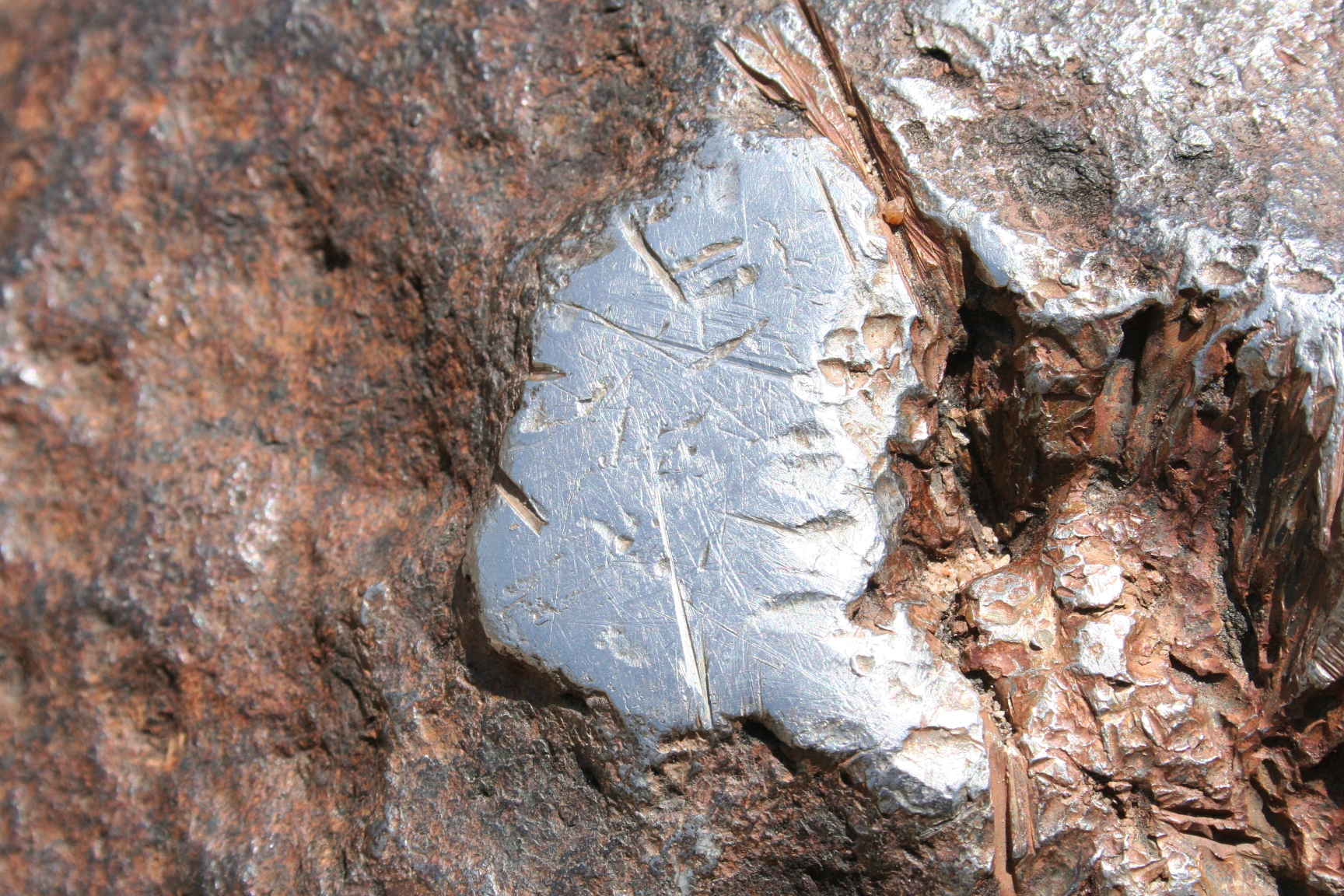- Hoba meteorite
Meteorite
Name= Hoba
Image_caption= The Hoba meteorite in 2007.
Image_width=
Type= Iron
Class=
Group= IVB
Structural_classification=Ataxite
Composition= 84% Fe, 16% Ni
Shock=
Weathering=
Country=Namibia
Region=Grootfontein ,Otjozondjupa Region
Lat_Long= coord|19|35|S|17|55|E|display=inline,title [http://tin.er.usgs.gov/meteor/metbull.php?code=11890 Meteoritical Bulletin Database: "Hoba"] ]
Observed_fall= No
Fall_date= 80,000 years ago
Found_date= 1920
TKW= 60tonne s
Image2_caption= Closeup of Hoba meteorite vandalismThe fall
The Hoba meteorite is thought to have landed over 80,000 years ago. It is inferred that the
Earth's atmosphere slowed the object down to the point that it fell to the surface atterminal velocity , thereby remaining intact and causing little excavation. The meteorite is unusual in that it is flat on both major surfaces, possibly causing it to have skipped across the top of the atmosphere in the way a flat stone skips on water.Discovery
The Hoba meteorite left no preserved crater and its discovery was a chance event. The owner of the land is said to have encountered the object while ploughing one of his fields with an ox. During this task, the farmer heard a loud metallic scratching sound, before his plough came to a sudden stop. The meteorite was excavated soon after and identified and described by scientist Jacobus Hermanus Brits, whose report was published in 1920. This report can be viewed at the
Grootfontein Museum in Namibia.Description and composition
Hoba is a tabloid body of metal, measuring 2.7 by 2.7 metres (8 feet 9 inches) by 0.9 meters (3 feet). In 1920 its mass was estimated at 66 tons. Erosion, scientific sampling and vandalism have reduced its bulk over the years. The remaining mass is currently estimated at just over 60 tons. The meteorite is composed of about 84% iron and 16%
nickel , with traces ofcobalt . It is classified as anataxite iron meteorite belonging the nickel-rich chemical class IVB. A crust of ironhydroxide s is locally present on the surface, owing to weathering.Modern History
In the attempt to control vandalism, the Government of Namibia (then
South West Africa ), declared the Hoba meteorite to be a National Monument onMarch 15 ,1955 with permission of Mrs. O. Scheel who was the owner of the farm at that time [ [http://www.marmet-meteorites.com/ Marmet- Meteorites ] ] . In 1985,Rossing Uranium Ltd. made resources and funds available to the Namibian Government to provide additional protection against vandalism. In 1987 Mr. J. Engelbrecht, the owner of Hoba West farm, donated the meteorite and the site where it lies to the State for "educational" purposes. Later that year, the Government opened a tourist centre at the site. As a result of these developments, vandalism of the Hoba meteorite has ceased and it is now visited by thousands of tourists every year.Notes and references
*"", Robert Dinwiddie, DK Adult Publishing, (2005), pg. 223.
Other projects
Commons cat left|Hoba Meteorite
External links
* [http://giantcrystals.strahlen.org/africa/hoba.htm Giant Crystal Project on the Hoba meteorite with Virtual Visit]
Wikimedia Foundation. 2010.
